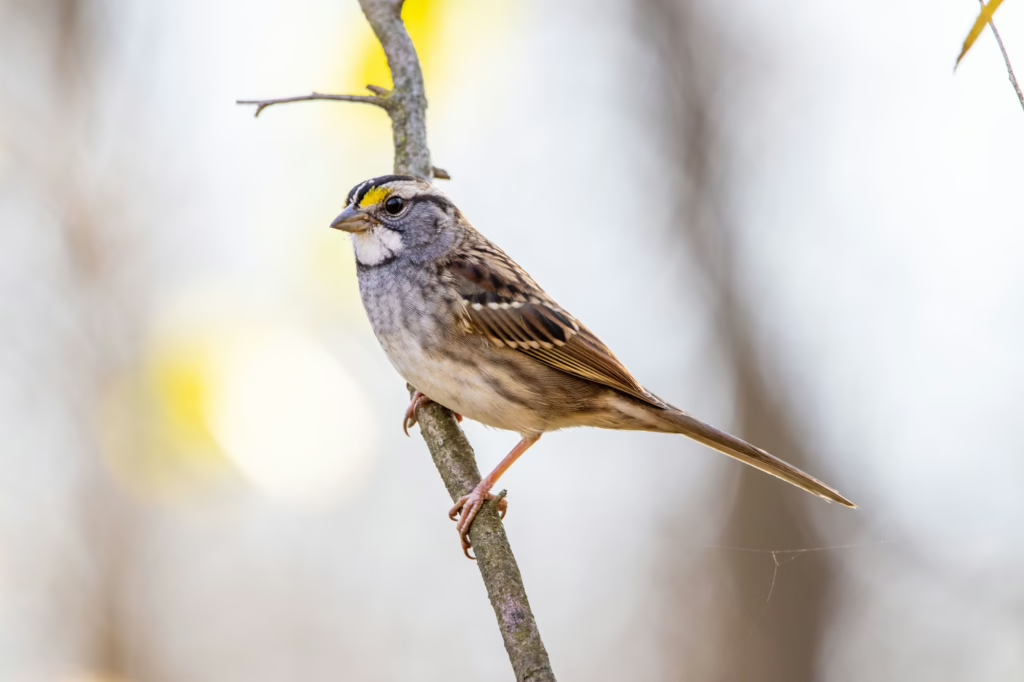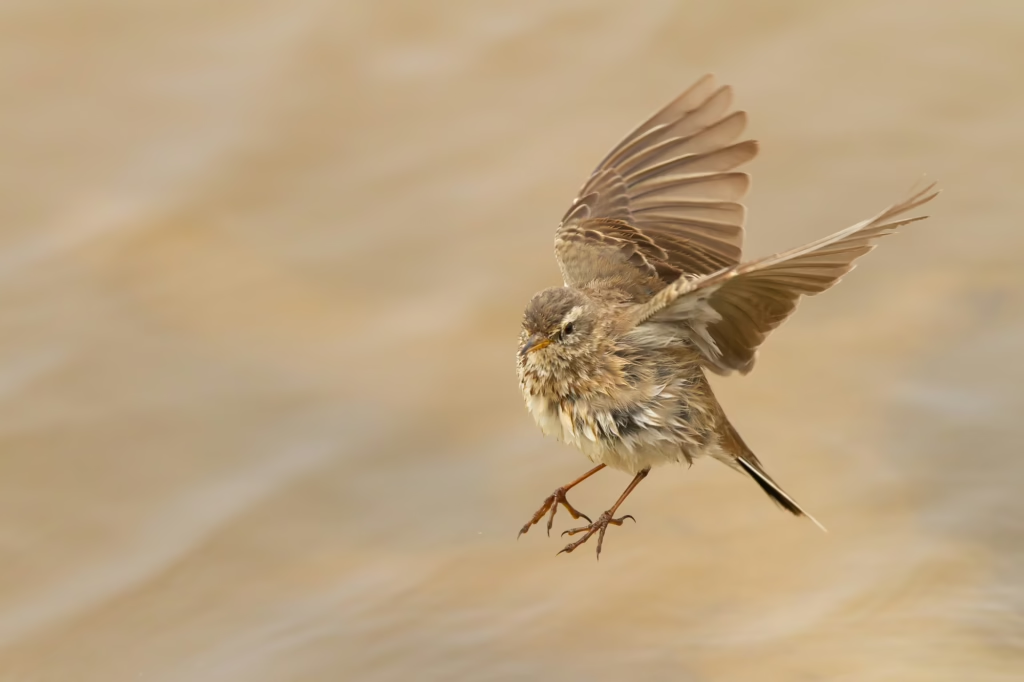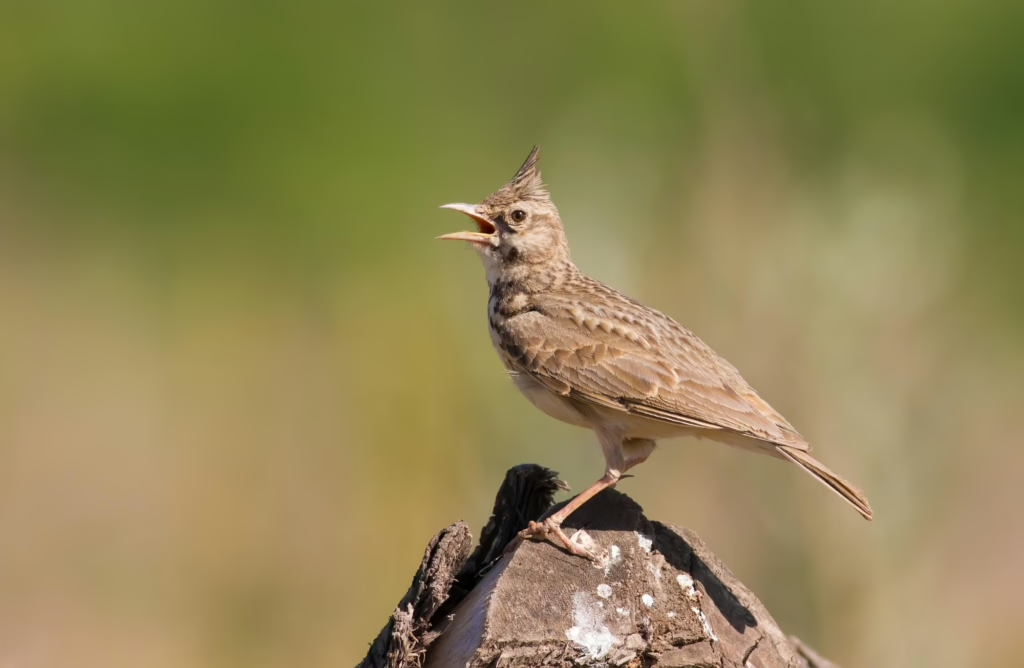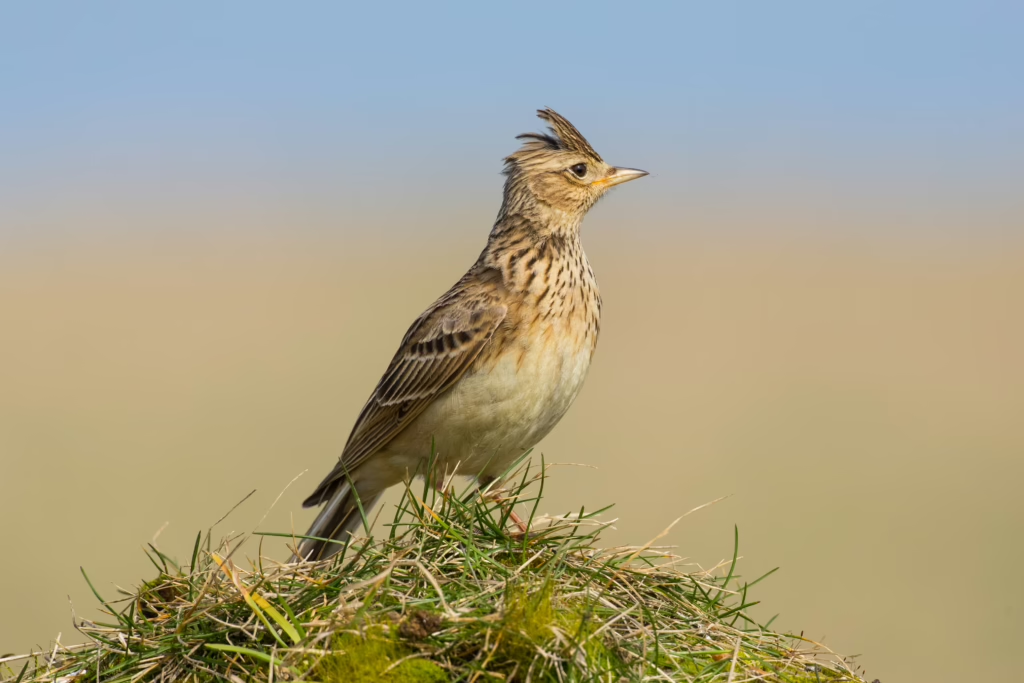Percy Bysshe Shelley’s “To a Skylark”, composed in 1820, stands as one of the most exalted lyrical poems in English Romantic literature. Inspired by the poet’s encounter with a skylark in the Italian skies, the poem transcends mere natural description and becomes a profound philosophical meditation on joy, creativity, and the limitations of human experience. Unlike William Wordsworth, who often found moral lessons in nature, Shelley approaches the skylark as a symbol of pure, untarnished beauty and unbounded emotional expression—a “blithe Spirit” untouched by the sorrows that plague human existence. The skylark, visible only through its song, becomes a metaphor for the ideal—the unseen essence of truth, joy, and poetic inspiration. Structured in a unique five-line stanza form with a consistent ABABB rhyme scheme, the poem rises and falls musically, mirroring the motion of the bird itself. Through a series of vivid similes and rhetorical questions, Shelley contrasts the skylark’s perfect expression with human art, which he sees as always shadowed by pain. Ultimately, the poem is not just a tribute to a bird, but a heartfelt plea for transcendence—an attempt to access the divine harmony the skylark represents. The expression-wise analysis below delves into the poetic and philosophical intricacies of this radiant ode.

Hail to thee, blithe Spirit!
Bird thou never wert,
That from Heaven, or near it,
Pourest thy full heart
In profuse strains of unpremeditated art.
Shelley begins with a joyful salutation to the skylark, calling it a “blithe Spirit”—not a mere bird, but a joyful being from Heaven or near it. Its song pours from its heart freely, naturally, and without conscious thought, as if it were divine inspiration.
Figures of Speech:
Apostrophe – Direct address to the skylark.
Metaphor – “Blithe Spirit” implies the bird is more than physical.
Alliteration – “Pourest thy…profuse…premeditated” enhances musical flow.
Paradox – “Strains of unpremeditated art” suggests effortless perfection.
Higher still and higher
From the earth thou springest
Like a cloud of fire;
The blue deep thou wingest,
And singing still dost soar, and soaring ever singest.
The skylark ascends ever higher, likened to a blazing cloud rising into the sky. Its motion and song are continuous and inseparable—its flight and music are one.
Figures of Speech:
Simile – “Like a cloud of fire” evokes an image of brilliance and intensity.
Alliteration – Repetition of ‘s’ and ‘h’ sounds: “singing…soar…springest”.
Chiasmus – “Singing still dost soar, and soaring ever singest” (inverted structure) for poetic symmetry.
Imagery – Visual and auditory images blend to depict movement and music.
In the golden lightning
Of the sunken sun,
O’er which clouds are bright’ning,
Thou dost float and run;
Like an unbodied joy whose race is just begun.
The skylark flies through the shimmering atmosphere of a setting sun, its movement and song seeming ethereal and joyous, like a spirit newly released into freedom.
Figures of Speech:
Metaphor – “Golden lightning” and “unbodied joy” represent spiritual beauty.
Personification – Clouds are “bright’ning,” attributing them with active qualities.
Simile – “Like an unbodied joy” compares the skylark to intangible bliss.
The pale purple even
Melts around thy flight;
Like a star of Heaven,
In the broad day-light
Thou art unseen, but yet I hear thy shrill delight,
As twilight spreads across the sky, the bird is invisible—like a star hidden by daylight—but its song is clear. This reflects Shelley’s theme of unseen beauty perceived through its effects.
Figures of Speech:
Imagery – “Pale purple even” creates a soft visual of dusk.
Simile – “Like a star of Heaven” compares the skylark to celestial presence.
Paradox – “Unseen… but yet I hear” emphasizes sensory contrast.
Alliteration – “Shrill… delight” evokes the piercing sound.
Keen as are the arrows
Of that silver sphere,
Whose intense lamp narrows
In the white dawn clear
Until we hardly see, we feel that it is there.
The skylark’s voice is compared to moonlight arrows—sharp, penetrating, and invisible by dawn. It suggests that some truths are felt more than seen, reinforcing the bird’s spiritual nature.
Figures of Speech:
Simile – “Keen as are the arrows…” compares the song’s sharpness to moonbeams.
Metaphor – “Intense lamp” for the moon.
Paradox – “We hardly see, we feel…” contrasts sense with intuition.
All the earth and air
With thy voice is loud,
As, when night is bare,
From one lonely cloud
The moon rains out her beams, and Heaven is overflow’d.
The skylark’s song fills all of nature. Shelley likens it to moonlight pouring from a lone cloud, flooding the sky with brightness. The metaphor stresses the overwhelming beauty of the skylark’s melody.
Figures of Speech:
Simile – Song likened to moonlight pouring from a cloud.
Metaphor – “The moon rains out her beams” creates a strong image of radiance.
Hyperbole – “Heaven is overflow’d” exaggerates the effect of beauty.
What thou art we know not;
What is most like thee?
From rainbow clouds there flow not
Drops so bright to see
As from thy presence showers a rain of melody.
The poet admits that the skylark surpasses understanding. Its song, more beautiful than rainbow-tinted rain, showers the world with melody—something that cannot be fully compared to any earthly thing.
Figures of Speech:
Rhetorical Question – “What is most like thee?” expresses awe and mystery.
Simile – Implied in “drops so bright” being less than the melody.
Metaphor – “Rain of melody” compares music to a natural outpouring.
Alliteration – “Rainbow… rain of… melody” heightens lyrical flow.
Like a Poet hidden
In the light of thought,
Singing hymns unbidden,
Till the world is wrought
To sympathy with hopes and fears it heeded not:
Here, Shelley compares the skylark to a visionary poet whose spontaneous song awakens unnoticed emotions in the world. Art has the power to reveal truths previously unacknowledged.
Figures of Speech:
Simile – Skylark compared to a hidden poet.
Personification – The world is stirred into sympathy.
Alliteration – “Hidden…hymns…heeded” enhances musical rhythm.
Enjambment – Lines flow over naturally, mirroring the unending song.
Like a high-born maiden
In a palace-tower,
Soothing her love-laden
Soul in secret hour
With music sweet as love, which overflows her bower:
The skylark is likened to a noble maiden singing privately of love. This simile evokes purity, secrecy, and overflowing emotion—all qualities Shelley attributes to the bird’s song.
Figures of Speech:
Simile – The skylark’s song is compared to a maiden’s private music.
Alliteration – “Soothing… soul… secret… sweet” adds softness.
Imagery – Vivid visual and emotional picture of secluded beauty.
Like a glow-worm golden
In a dell of dew,
Scattering unbeholden
Its aëreal hue
Among the flowers and grass, which screen it from the view:
This image captures unseen beauty: the glow-worm, though hidden, spreads light. The skylark’s song, though its body is invisible, has a powerful presence.
Figures of Speech:
Simile – Skylark compared to a hidden glow-worm.
Imagery – Strong visual of light among dew and flowers.
Alliteration – “Golden… glow-worm… grass” enhances lyrical quality.
Like a rose embower’d
In its own green leaves,
By warm winds deflower’d,
Till the scent it gives
Makes faint with too much sweet those heavy-winged thieves:
The skylark’s song is likened to the scent of a rose, unwrapped by the wind and so sweet it weakens the bees who try to steal it. This metaphor equates music with aroma and theft with nature’s hunger for beauty.
Figures of Speech:
Simile – Skylark compared to an over-sweetened rose.
Personification – Bees as “heavy-winged thieves.”
Alliteration – “Warm winds… with… wings.”
Hyperbole – Scent so sweet it causes fainting.
Sound of vernal showers
On the twinkling grass,
Rain-awaken’d flowers,
All that ever was
Joyous, and clear, and fresh, thy music doth surpass.
Even the most joyous sounds of spring—showers, blooming flowers—are less delightful than the skylark’s song. Shelley ranks it above all natural beauty.
Figures of Speech:
Imagery – “Twinkling grass,” “vernal showers,” “rain-awaken’d flowers.”
Hyperbole – “Thy music doth surpass” everything joyous and fresh.
Alliteration – “Sound… showers… singing.”

Teach us, Sprite or Bird,
What sweet thoughts are thine:
I have never heard
Praise of love or wine
That panted forth a flood of rapture so divine.
The poet begs the skylark to reveal the source of its joy. Even the highest praises of love or celebration (such as those found in poetry or song about wine) fall short of the ecstasy found in the bird’s song. Shelley desires access to the skylark’s mind, as it seems to hold a purer, more divine source of emotion.
Figures of Speech:
Apostrophe – Direct plea to the skylark to teach.
Metaphor – “Flood of rapture” compares joy to an overwhelming current.
Alliteration – “Praise… panted… flood” enhances rhythm.
Enjambment – The stanza flows naturally between lines.
Chorus Hymeneal,
Or triumphal chant,
Match’d with thine would be all
But an empty vaunt,
A thing wherein we feel there is some hidden want.
Even ceremonial and celebratory songs like a wedding chorus (chorus hymeneal) or a victory chant (triumphal chant) seem hollow compared to the skylark’s music. Those human songs, Shelley argues, lack something essential—an unnamed emotional depth or sincerity.
Figures of Speech:
Allusion – “Chorus Hymeneal” refers to classical wedding songs.
Metaphor – Human art is “an empty vaunt”—boastful but insincere.
Contrast – Human song vs. skylark’s pure melody.
Alliteration – “Hidden… hymn… hymn” (earlier), “vaunt… feel”.
What objects are the fountains
Of thy happy strain?
What fields, or waves, or mountains?
What shapes of sky or plain?
What love of thine own kind? what ignorance of pain?
Shelley fires a series of passionate questions, attempting to discover the source of the skylark’s happiness. He wonders whether it stems from natural scenes or the absence of pain and sorrow. There is a tone of desperation: the human poet wants to grasp something that lies beyond human reach.
Figures of Speech:
Rhetorical Questions – Repeated questions express wonder and desire.
Metaphor – “Fountains of thy happy strain” equates song to flowing water.
Anaphora – Repetition of “What…” at the beginning of lines adds intensity.
Antithesis – “Love… pain” contrast joy with human suffering.
With thy clear keen joyance
Languor cannot be:
Shadow of annoyance
Never came near thee:
Thou lovest: but ne’er knew love’s sad satiety.
The skylark’s joy is so intense and pure that weariness (languor) or suffering (annoyance) can’t touch it. It knows love, but not the bitterness or exhaustion that often follows it for mortals. The stanza conveys a sense of holy perfection untouched by human flaws.
Figures of Speech:
Contrast – Joy vs. languor, love vs. satiety.
Alliteration – “Clear keen… languor… love… ne’er knew.”
Personification – “Shadow of annoyance” suggests emotional disturbance as a tangible entity.
Waking or asleep,
Thou of death must deem
Things more true and deep
Than we mortals dream,
Or how could thy notes flow in such a crystal stream?
Shelley believes the skylark must have a deeper understanding of life and death than humans do—perhaps because it sings with such clarity and truth, “like a crystal stream.” Its song must stem from knowledge more profound than human consciousness.
Figures of Speech:
Metaphor – “Crystal stream” describes the purity and clarity of song.
Alliteration – “Deem… deep… dream.”
Rhetorical Question – Emphasizes the mystery of the bird’s knowledge.
Contrast – Skylark’s knowledge vs. human dreaming.
We look before and after,
And pine for what is not:
Our sincerest laughter
With some pain is fraught;
Our sweetest songs are those that tell of saddest thought.
This stanza is among the most famous in Romantic poetry. Shelley states that humans are trapped by time, constantly longing for past and future. Even in joy, there is sorrow. Our best art emerges from suffering—a fundamental contrast to the skylark’s untroubled, joyful music.
Figures of Speech:
Antithesis – “Laughter” vs. “pain”, “sweetest songs” vs. “saddest thought.”
Paradox – True joy is shadowed by sorrow.
Generalization – Shelley speaks universally about the human condition.
Alliteration – “Sweetest songs… saddest thought.”
Yet if we could scorn
Hate, and pride, and fear;
If we were things born
Not to shed a tear,
I know not how thy joy we ever should come near.
Shelley continues to explore the idea that the skylark’s happiness is inaccessible because humans are bound by negative emotions and suffering. Only by rejecting these entirely—which we cannot—could we begin to understand the skylark’s bliss.
Figures of Speech:
Conditional Construction – “Yet if we could…” emphasizes impossibility.
Alliteration – “Scorn… shed… should.”
Personification – “Hate, and pride, and fear” as internal forces.
Tone – Regretful and resigned.
Better than all measures
Of delightful sound,
Better than all treasures
That in books are found,
Thy skill to poet were, thou scorner of the ground!
Shelley proclaims that possessing even a portion of the skylark’s poetic skill would be more valuable than any music or literary treasure. The skylark is again elevated above earthly things—literally and spiritually.
Figures of Speech:
Hyperbole – Overstated praise of the skylark’s poetic superiority.
Metaphor – “Treasures in books” = human knowledge/art.
Alliteration – “Better… books… bird.”
Epithets – “Scorner of the ground” defines skylark as spiritual.
Teach me half the gladness
That thy brain must know,
Such harmonious madness
From my lips would flow
The world should listen then, as I am listening now.
In the final stanza, Shelley returns to his earnest plea. If he could only learn half the bird’s joy, his poetry would become so powerful and inspired that the world would be compelled to listen—just as he is now, in awe of the skylark.
Figures of Speech:
Apostrophe – Plea directed to the skylark.
Oxymoron – “Harmonious madness” blends reason and passion.
Alliteration – “Gladness… brain… lips… listen.”
Hyperbole – The world listening to his poetry, an exaggerated outcome.

Closing Note on To a Skylark‘s Structure and Unity:
Shelley’s “To a Skylark” is not merely descriptive but a deeply philosophical and emotional inquiry. It blends rapture with reflection, and each stanza contributes to a crescendo of wonder, yearning, and spiritual aspiration. The bird, invisible yet heard, becomes a symbol of idealized joy, unattainable perfection, and poetic inspiration.


